- Home
- Tom Clancy
Airborne: A Guided Tour of an Airborne Task Force Page 13
Airborne: A Guided Tour of an Airborne Task Force Read online
Page 13
The core curriculum teaches the students how to package, rig, and load personnel, supplies, and equipment onto aircraft for delivery into a DZ. This may not sound overly difficult until you consider the variety of stuff that an airborne division like the 82nd can take with it into combat. Everything from food and water, to field hospitals and, of course, paratroops. All of these things need to be delivered safely, and the Jumpmaster School is where one acquires the knowledge. For example, there are over a dozen personal weapons containers that can be jumped by paratroops into battle. These are padded container rolls, which help protect a trooper’s personal weapons load during a jump and landing. The most common one fits the basic M16A2 combat rifle that is issued to most of the personnel in the 82nd. There are others, though. These include containers to carry mortars, light machine guns, and even guided missiles. In fact, the newest container, for the new Javelin antitank missile, was just being qualified for use during one of our early visits to Fort Bragg. The largest and most difficult container to handle is the one for the Stinger man-portable surface-to-air missile (SAM). You have to be at least 5 feet 10/1.75 meters tall to jump with it. Each container, pallet, and load is a different loading and rigging challenge, though, and a qualified jumpmaster must know how to handle them all.
While the Jumpmaster Course sits at the technical extreme of airborne warfare, the Pathfinder program teaches more in the way of field skills. Back in World War II, Pathfinders were the elite of the airborne, dropped in prior to combat jumps to mark the drop zones and provide scouting. Today they do a similar job, though their tools and procedures are far more advanced than those of their World War II brethren. It should be noted, though, that not all the Pathfinder students are paratroopers. In fact, a large percentage of Pathfinders are assigned to airmobile and air cavalry (helicopter) units, since they also use landing zones (LZ) for their operations. Overall, the Pathfinder Course teaches the following skills:• The technical expertise to plan and execute air movements, air assaults, airborne and air resupply missions for either fixed- or rotary-wing aircraft.
• Preparing air mission and briefing documents, as well as being able to support theater-level air tasking orders.18
• Controlling and executing DZ and helicopter LZ operations.
• Performing sling-load and other loading/unloading operations.
• Acting as part of an Air Force Combat Control Team (CCT).
• Conducting DZ/LZ area surveys.
• Controlling and certifying other personnel as DZ/LZ support personnel.
The Pathfinder Course is taught in 165.6 hours of instruction at Fort Benning over three weeks. While a BAS certification is not required to take the Pathfinder Course, it is a busy and highly physical curriculum nevertheless. A great deal of field work is carried on during the course, and severely taxes the endurance of even veteran paratroops. Only 618 officers and NCOs are allowed to take the course each year, though the graduation rate of around 82 percent means about 540 new Pathfinders each year for the Army. Each class (there are thirteen each year) is made up of between 24 and 48 students. It is a tough class, but the high graduation rate tells a lot about the professionalism of the “Black Hats” that run the course.
Conclusion
The training that we have discussed in this chapter is really just a small slice of what the people within the 82nd Airborne receive during their careers as soldiers. Nevertheless, I think that we have focused on the specific things that make paratroopers unique in a world crowded with folks who wear uniforms. Airborne troopers are special, much like the Marines and other elite forces that I have spent time with over the years. As part of the small group of personnel entrusted with forced entry onto hostile shores, they have a special trust in the minds of the National Command Authorities and the hearts of the American people. This is why you almost always see paratroopers there first when a crisis erupts overseas. It’s what they have trained to do.
Tools of the Airborne Trade
As you have probably already guessed from the previous chapters, the airborne troopers of the 82nd Airborne Division are generally thought to be the elite of America’s infantry forces. As the best of the half-dozen or so infantry divisions in U.S. service, they are equipped with the best and latest weapons and systems that allow them to ply their deadly trade. But there is more to the combat power of an airborne unit than just a count of the rifles, artillery tubes, and missile launchers. I make this statement based upon the knowledge and conviction that in infantry units, the soldiers themselves are the combat power. Men, wielding the deadly tools of their profession, are the primary maneuver units of the infantry, and this has both benefits and detriments.
On the plus side, well-led infantry troops are the literal definition of “presence” in both political and military terms. Air and naval power zealots may try to say that their particular instruments of war give the effects of presence, but they pale in comparison with the power of men with guns on the ground.
Infantry units have mass and cover area. They actually take, hold, and live on the ground that politicians and nations covet. It is this one characteristic that will always make infantry the most useful of ground units. Unfortunately, with these sterling qualities come liabilities. Hard as armies have tried, it is as yet impossible to make an infantryman who is bulletproof and still able to move and fight. Also, infantrymen’s mobility and cargo capacity are frequently based upon the strength of their own legs and backs. This limits how much they can carry, as well as how far and fast. It also makes them terribly vulnerable compared to their counterparts who ride into battle in armored fighting vehicles, armed helicopters, or warplanes. Skin and bone are a poor match for the modern bullet and other antipersonnel devices, and infantry units tend to accumulate casualties quickly as a result. These casualties, in the form of flag-draped coffins on the tarmac at Dover AFB in Delaware, are the nightmare of every politician who has aspired to high office. Nothing turns people against a military intervention quicker than seeing lines of such containers on the evening news. Lyndon Johnson and Bill Clinton found this out the hard way in Vietnam and Somalia, and the specter of such visions guided George Bush in both Panama and the Persian Gulf.
Infantry, therefore, is a double-edged sword; gifted with presence and flexibility, but fraught with human frailty and costs. In a democracy which values individual humans so greatly, the risks can sometimes paralyze our leaders into inaction.
However, there are things that a country can do to make infantry more capable and survivable, and these frequently revolve around the equipment that is issued to them. The United States gets mixed marks on this. Throughout American history, the Department of Defense (and its predecessor, the War Department) has frequently failed to supply the troops with adequate firearms, clothing, and sustenance. One Civil War story had the War Department buying cardboard boots, which promptly fell apart when worn! More recently, there was the Vietnam-era scandal during the initial fielding of the M16 combat rifle.19 However, the weapons and other equipment currently supplied to today’s troopers are generally of good quality and design. Not perfect, but pretty good. Some of the items are the best of their kind in the world, particularly those involving electronic and imaging technology. Others, like boots and rations, still require some work to match those of other armies. It sometimes seems that the United States spends millions on high-technology weapons systems, but fails to put any significant funds towards keeping troops properly dry and shod in cold and wet weather.
Things are changing, though. As we head into the 21st century, the U.S. Army is finally investing serious funds to update the basic gear of the infantryman through the Force XXI program. But for the next decade or so, the troopers of the 82nd Airborne and the other infantry divisions will have to make do with versions of what is already out there. There will be some limited modernization of some systems, but things are going to be tight for a long time, given the need to balance the federal budget.
What follows is
a short description of the numerous items that American infantry forces use when they operate in the field. I hope that as you read it, you will get some feeling not only for the weapons, but also for the lifestyle of the field soldier. It is decidedly different from that of Marines on ships or even the armored units of the U.S. Army. No part of our armed forces more resembles the forces that won and protected our freedoms in the 18th and 19th centuries than today’s infantry. In today’s infantry, you can still see the adaptability and toughness that won battles like Yorktown and Gettysburg. It is a tough lifestyle, more than just camping in conditions where you can shoot the other campers! You have to really want to be an infantryman, which is perhaps why they fascinate me so much.
The Soldier’s Load: Personal Infantry Equipment
Recruits should be compelled.frequently to carry a burden of up to sixty pounds and to march with the military step, since on tough campaigns they face the necessity of carrying their provisions as well as their weapons.
Vegetius, Military Matters, 4th Century AD
The only truly light infantry are those troops who go out for a day or two of patrolling and carry minimal loads (weapons and ammo, a canteen or two, some food, a blanket and waterproof sheet, etc.). Even this light load can weigh thirty to forty pounds, minimum.
—Jim Dunnigan, Digital Soldiers, 1996
To start our look at infantry equipment, it is appropriate to look at the gear that a soldier carries on his person. This can be a considerable load, and is only growing as time goes on. Such has always been the lot of the ground soldier in history, as the following example shows.
Soldiers in ancient Rome were not big men, but they routinely carried loads of sixty or eighty pounds on marches through the frozen forests of Germany or the hellish deserts of Syria. After the reforms of Marius in the 1st century BC, the Roman legionary (nicknamed “Marius’s Mule”) was the most formidable foot soldier on Earth, a position he held until the heavy cavalry of the Goths trampled the Emperor Valens and his legions at Adrianople in 378 AD. The legionary’s heavy load of personal equipment was a burden, but for centuries it made him unbeatable.
When today’s American paratrooper jumps into combat, he probably carries the heaviest average load of personal equipment of any warrior in history. Average loads of between 80 and 120 lb/36.3 and 54.4 kg are common during combat drops. Imagine carrying the equivalent of a bag of cement on your back as you try to march over a dozen miles into a combat zone! So let’s look at “the soldier’s load,” to get some idea of the challenge faced by today’s infantry.
A fully loaded paratrooper showing off his load. Airborne troopers typically jump into combat with loads of between 80 and 120 pounds/36 and 55 kilograms, which they must carry into battle.
JOHN D. GRESHAM
Clothing/Body Armor
We’ll start our examination of soldiers’ personal gear with what they wear on their heads: the helmet. Back in ancient times, the Roman legionary’s head was protected by a bronze or iron helmet, often decorated with distinctive plumes or a horsehair crest so that officers could identify their own men in the confusion of battle. It provided a minimum of protection against the shock of being clubbed or chopped at, and would hardly do on the battlefields of today.
Today’s standard American “Fritz” or “K-Pot” helmet is made of Dupont Kevlar, a synthetic fiber material stronger and lighter than steel. It greatly resembles the helmets used by German forces throughout this century, and provides the best level of cranial protection available. There is an elaborate internal suspension system of straps and padding, and a replaceable fabric cover that provides for attaching camouflage to make the soldier more inconspicuous in battle. The K-Pot weighs about 31b/1.35 kg, and is secured by a chin strap. For the paratroops, this is tightly fastened before a jump. (This is one piece of gear you don’t want coming loose in a 130-knot slipstream!) Many armies have issued special paratroop helmets (designed with extra padding, or special compact shapes to reduce fraying or possible interference with parachute shroud lines), but the U.S. Army considers the standard infantry helmet, correctly worn, to be perfectly good for jumping.
There are two other items of headgear carried by paratroops. The soft cotton Battle Dress Uniform (BDU) hat is normally worn outdoors in non-combat situations. The other hat is the famous maroon airborne beret, made of wool felt and adorned with a regimental badge. This is typically worn on formal or ceremonial occasions, or in barracks. The floppy but dashing beret is the traditional hat of the Basque people, tough mountain folk who live in the Pyrenees between France and Spain, and was adopted long ago as a distinctive emblem by elite French Alpine troops. When the first British parachute regiment was established in 1940, it selected the maroon beret as its symbol (the Royal Tank Regiment already wore black berets). U.S. Army Airborne troops adopted the custom after World War II.
Moving down from the trooper’s head, we want now to examine the clothing worn into battle. At first in Roman times, the legionary’s legs were usually bare in all weather. But in the 5th century AD, the Romans adopted trousers from their barbarian foes and allies. Since that time, uniforms have evolved from a ceremonial decoration to a practical device for providing both protection against the elements and a bit of stealth for the infantry.
The modern U.S. BDU is the product of decades of research and engineering. There are three weights, depending on climate, and several camouflage color schemes: forest green, desert tan, and brown (the troops call them “chocolate chips”); white and gray for mountain/arctic conditions; and a dark, rarely seen night/urban pattern. The lightweight shirt and trousers are 100 percent cotton; the heavier weights are 50 percent cotton/50 percent synthetic fiber. BDUs are cut large for easy movement, so they look baggy. Airborne units, though, with their tradition of pride in looking sharp, manage to wear their BDUs with a little more style than most Army outfits as a result of tailoring and starching.
The BDU shirt, usually worn over a cotton undershirt of standard Army olive drab, has reinforced elbows, adjustable cuffs, and four button-down “bellows” pockets for ammunition, food, and other essentials. The trousers have two roomy side pockets, along with the usual front and back pockets. Adjustable waist tabs and drawstring ties at the ankles ensure a tight fit around the boot tops. In general, the BDUs are quite comfortable and wear well. In more temperate climates, troops carry the wonderful 4-1b/1.8-kg “field jacket,” a comfortable and versatile garment with an optional button-in liner and an attached hood that stows inside a clever zipped pouch.
Based largely in the muggy southern United States, with much of its recent operational experience in desert and jungle conditions, the U.S. Army has been slow to develop good cold-weather equipment. Back in the savage winters of the Korean War (1950-53), the Army’s outfits were inferior even when compared to the crude quilted jackets and fur hats worn by the Chinese Communist forces. Most cold weather injuries and fatalities are not due to frostbite, but rather to hypothermia (excessively low body core temperature) caused by loss of heat through wet garments. The new U.S. Extended Cold Weather Clothing System (ECWCS) finally reflects the lessons learned by the Army in Alaska, the U.S. Marines in Norway, and generations of research and development by civilian mountaineering and camping equipment suppliers. Much of the credit for the success of the new ECWCS clothing goes to a remarkable synthetic fabric called Gore-Tex. This lightweight material “breathes” through microscopic pores (9 billion per square in/1.4 billion per square cm), allowing body moisture to escape, but keeping warm air in and cold out. A layer of Gore-Tex is sandwiched between layers of nylon to make up a light but warm outer garment. The Inuit (“Eskimo”) peoples of the Arctic discovered this principle centuries ago, wearing their superbly crafted multi-layer fur garments with the fur on the inside to wick moisture away from the body. The ECWCS includes a hooded parka, gloves, and outer trousers. Gloves are a tough design challenge, since the soldier needs to be able to fire his weapon, operate a radio, and perform other
precise tasks without losing any fingers to frostbite. The current standard cold-weather gloves are made of leather, in three sizes, with separate woolen liners.
To a soldier, any soldier, there is no more important piece of personal gear than boots. You can be stark naked, and still live to fight another day if you have boots to protect your feet as you walk to shelter. The legionary’s feet were shod with leather sandals, studded with iron hobnails for traction. Two thousand years later, there is still no more flexible and durable base material than leather for footwear. This means that most boots still have leather “uppers.” However, the modern rubber-soled jump boot does have a steel insert for protection against punji stakes and similar battlefield hazards.20 The highly polished black jump boot is the revered symbol of the U.S. Airborne forces, even more than the beret or the winged parachute emblem. Any non-airborne-qualified soldier who appears in public wearing jump boots will be politely asked (once!) to remove them. The current jump boot is tall, providing strong and heavily padded ankle support. This is vital in helping heavily loaded paratroops avoid serious injuries during landings. Like a hockey skate, it is tightly bound with “speed laces,” secured by blackened brass fittings. A pair of jump boots weighs about 41b/1.8 kg, and several highly regarded manufacturers, including Danner and Corcoran, produce them.

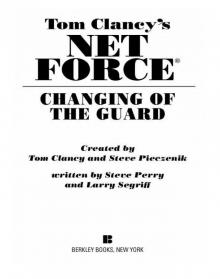 Changing of the Guard
Changing of the Guard Clear and Present Danger
Clear and Present Danger Hounds of Rome
Hounds of Rome Breaking Point
Breaking Point Tom Clancy's Jack Ryan Books 7-12
Tom Clancy's Jack Ryan Books 7-12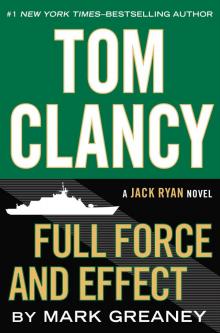 Full Force and Effect
Full Force and Effect The Archimedes Effect
The Archimedes Effect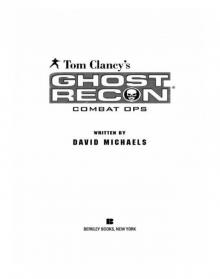 Combat Ops
Combat Ops Into the Storm: On the Ground in Iraq
Into the Storm: On the Ground in Iraq Under Fire
Under Fire Point of Impact
Point of Impact Red Rabbit
Red Rabbit Rainbow Six
Rainbow Six The Hunt for Red October
The Hunt for Red October The Teeth of the Tiger
The Teeth of the Tiger Conviction (2009)
Conviction (2009) Battle Ready
Battle Ready Patriot Games
Patriot Games The Sum of All Fears
The Sum of All Fears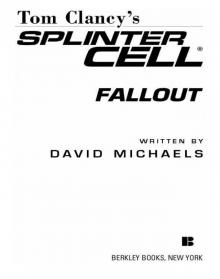 Fallout (2007)
Fallout (2007) Red Storm Rising
Red Storm Rising The Cardinal of the Kremlin
The Cardinal of the Kremlin Executive Orders
Executive Orders Lincoln, the unknown
Lincoln, the unknown Threat Vector
Threat Vector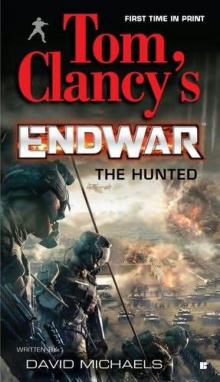 The Hunted
The Hunted Shadow Warriors: Inside the Special Forces
Shadow Warriors: Inside the Special Forces End Game
End Game Special Forces: A Guided Tour of U.S. Army Special Forces
Special Forces: A Guided Tour of U.S. Army Special Forces Locked On
Locked On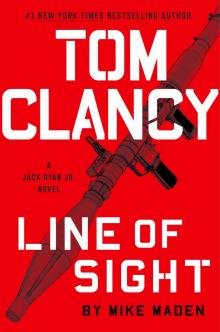 Line of Sight
Line of Sight Tom Clancy Enemy Contact - Mike Maden
Tom Clancy Enemy Contact - Mike Maden Fighter Wing: A Guided Tour of an Air Force Combat Wing
Fighter Wing: A Guided Tour of an Air Force Combat Wing Springboard
Springboard Line of Sight - Mike Maden
Line of Sight - Mike Maden EndWar
EndWar Dead or Alive
Dead or Alive Tom Clancy Support and Defend
Tom Clancy Support and Defend Checkmate
Checkmate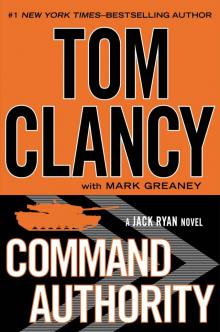 Command Authority
Command Authority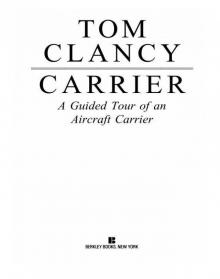 Carrier: A Guided Tour of an Aircraft Carrier
Carrier: A Guided Tour of an Aircraft Carrier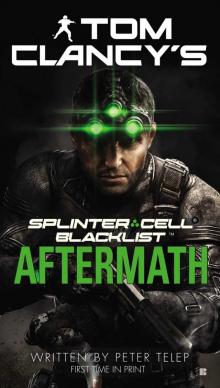 Blacklist Aftermath
Blacklist Aftermath Marine: A Guided Tour of a Marine Expeditionary Unit
Marine: A Guided Tour of a Marine Expeditionary Unit Commander-In-Chief
Commander-In-Chief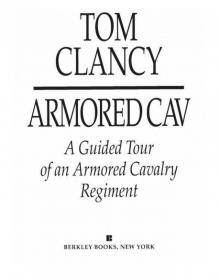 Armored Cav: A Guided Tour of an Armored Cavalry Regiment
Armored Cav: A Guided Tour of an Armored Cavalry Regiment Tom Clancy's Jack Ryan Books 1-6
Tom Clancy's Jack Ryan Books 1-6 The Ultimate Escape
The Ultimate Escape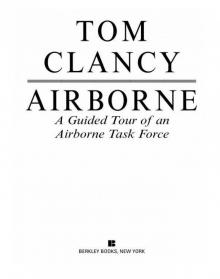 Airborne: A Guided Tour of an Airborne Task Force
Airborne: A Guided Tour of an Airborne Task Force Debt of Honor
Debt of Honor Cyberspy
Cyberspy Point of Contact
Point of Contact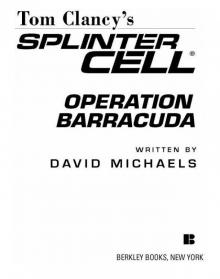 Operation Barracuda (2005)
Operation Barracuda (2005)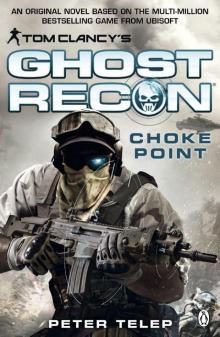 Choke Point
Choke Point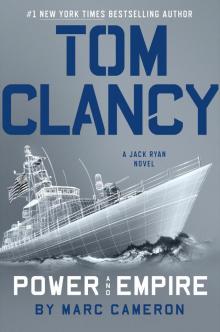 Power and Empire
Power and Empire Every Man a Tiger: The Gulf War Air Campaign
Every Man a Tiger: The Gulf War Air Campaign Endgame (1998)
Endgame (1998)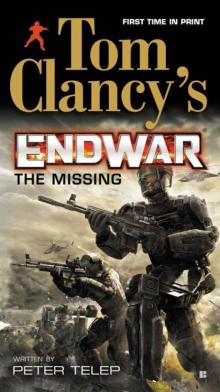 EndWar: The Missing
EndWar: The Missing Splinter Cell (2004)
Splinter Cell (2004) The Great Race
The Great Race True Faith and Allegiance
True Faith and Allegiance Deathworld
Deathworld Ghost Recon (2008)
Ghost Recon (2008) Duel Identity
Duel Identity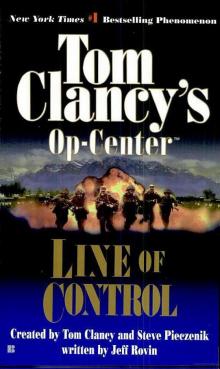 Line of Control o-8
Line of Control o-8 The Hunt for Red October jr-3
The Hunt for Red October jr-3 Hidden Agendas nf-2
Hidden Agendas nf-2 Acts of War oc-4
Acts of War oc-4 Ruthless.Com pp-2
Ruthless.Com pp-2 Night Moves
Night Moves The Hounds of Rome - Mystery of a Fugitive Priest
The Hounds of Rome - Mystery of a Fugitive Priest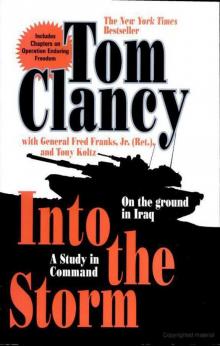 Into the Storm: On the Ground in Iraq sic-1
Into the Storm: On the Ground in Iraq sic-1 Threat Vector jrj-4
Threat Vector jrj-4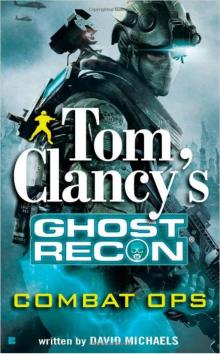 Combat Ops gr-2
Combat Ops gr-2 Virtual Vandals nfe-1
Virtual Vandals nfe-1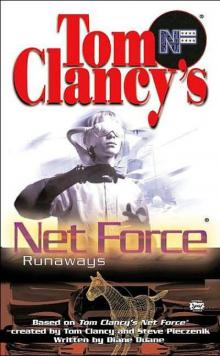 Runaways nfe-16
Runaways nfe-16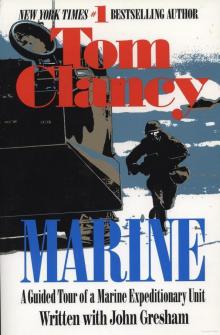 Marine: A Guided Tour of a Marine Expeditionary Unit tcml-4
Marine: A Guided Tour of a Marine Expeditionary Unit tcml-4 Shadow Warriors: Inside the Special Forces sic-3
Shadow Warriors: Inside the Special Forces sic-3 Jack Ryan Books 1-6
Jack Ryan Books 1-6 Cold Case nfe-15
Cold Case nfe-15 Changing of the Guard nf-8
Changing of the Guard nf-8 Splinter Cell sc-1
Splinter Cell sc-1 Battle Ready sic-4
Battle Ready sic-4 The Bear and the Dragon jrao-11
The Bear and the Dragon jrao-11 Fighter Wing: A Guided Tour of an Air Force Combat Wing tcml-3
Fighter Wing: A Guided Tour of an Air Force Combat Wing tcml-3 Patriot Games jr-1
Patriot Games jr-1 Jack Ryan Books 7-12
Jack Ryan Books 7-12 Mission of Honor o-9
Mission of Honor o-9 Private Lives nfe-9
Private Lives nfe-9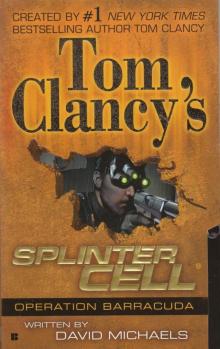 Operation Barracuda sc-2
Operation Barracuda sc-2 Cold War pp-5
Cold War pp-5 Point of Impact nf-5
Point of Impact nf-5 Red Rabbit jr-9
Red Rabbit jr-9 The Deadliest Game nfe-2
The Deadliest Game nfe-2 Springboard nf-9
Springboard nf-9 Safe House nfe-10
Safe House nfe-10 EndWar e-1
EndWar e-1 Duel Identity nfe-12
Duel Identity nfe-12 Deathworld nfe-13
Deathworld nfe-13 Politika pp-1
Politika pp-1 Rainbow Six jr-9
Rainbow Six jr-9 Tom Clancy's Power Plays 1 - 4
Tom Clancy's Power Plays 1 - 4 Endgame sc-6
Endgame sc-6 Executive Orders jr-7
Executive Orders jr-7 Net Force nf-1
Net Force nf-1 Call to Treason o-11
Call to Treason o-11 Locked On jrj-3
Locked On jrj-3 Against All Enemies
Against All Enemies The Sum of All Fears jr-7
The Sum of All Fears jr-7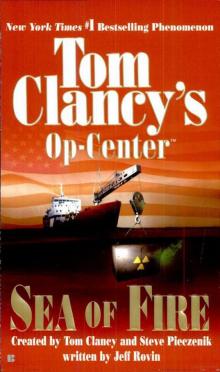 Sea of Fire o-10
Sea of Fire o-10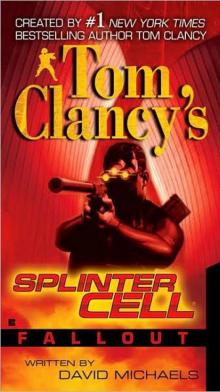 Fallout sc-4
Fallout sc-4 Balance of Power o-5
Balance of Power o-5 Shadow Watch pp-3
Shadow Watch pp-3 State of War nf-7
State of War nf-7 Wild Card pp-8
Wild Card pp-8 Games of State o-3
Games of State o-3 Death Match nfe-18
Death Match nfe-18 Against All Enemies mm-1
Against All Enemies mm-1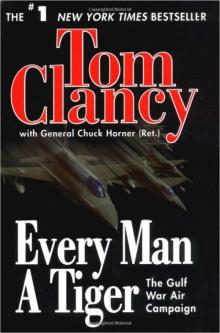 Every Man a Tiger: The Gulf War Air Campaign sic-2
Every Man a Tiger: The Gulf War Air Campaign sic-2 Cybernation nf-6
Cybernation nf-6 Support and Defend
Support and Defend Night Moves nf-3
Night Moves nf-3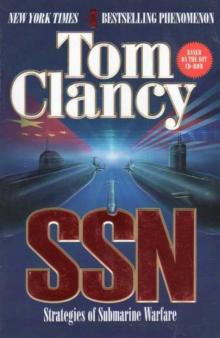 SSN
SSN Cutting Edge pp-6
Cutting Edge pp-6 The Cardinal of the Kremlin jrao-5
The Cardinal of the Kremlin jrao-5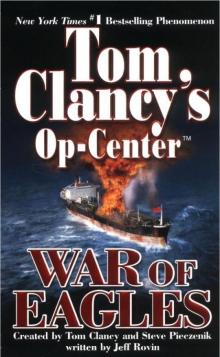 War of Eagles o-12
War of Eagles o-12 Op-Center o-1
Op-Center o-1 Mirror Image o-2
Mirror Image o-2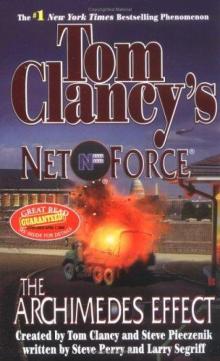 The Archimedes Effect nf-10
The Archimedes Effect nf-10 Teeth of the Tiger jrj-1
Teeth of the Tiger jrj-1 Bio-Strike pp-4
Bio-Strike pp-4 State of Siege o-6
State of Siege o-6 Debt of Honor jr-6
Debt of Honor jr-6 Zero Hour pp-7
Zero Hour pp-7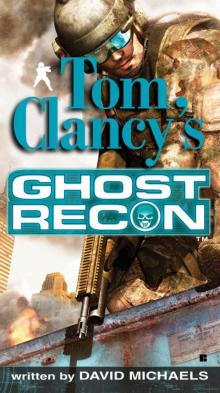 Ghost Recon gr-1
Ghost Recon gr-1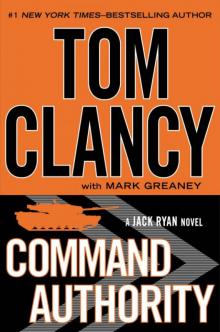 Command Authority jr-10
Command Authority jr-10 Tom Clancy's Power Plays 5 - 8
Tom Clancy's Power Plays 5 - 8 Checkmate sc-3
Checkmate sc-3 Breaking Point nf-4
Breaking Point nf-4 Gameprey nfe-11
Gameprey nfe-11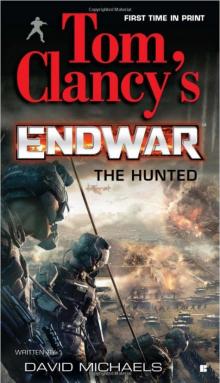 The Hunted e-2
The Hunted e-2 Hidden Agendas
Hidden Agendas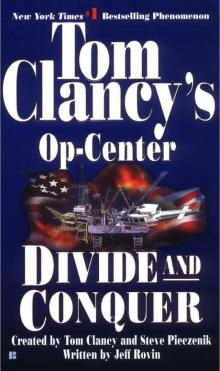 Divide and Conquer o-7
Divide and Conquer o-7